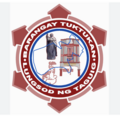Tuktukan | |
|---|---|
 Taguig City Hall, located in the barangay | |
 | |
| Coordinates: 14°31′40.95″N121°4′18.40″E / 14.5280417°N 121.0717778°E | |
| Country | Philippines |
| Region | National Capital Region |
| City | Taguig |
| District | 1st Legislative district of Taguig |
| Government | |
| • Type | Barangay |
| • Punong Barangay | Suranie Ulanday |
| • Barangay Councilor |
|
| • Sangguniang Kabataan Chairperson | Marc Joseph Dela Cruz |
| Area | |
• Total | 0.31 km2 (0.12 sq mi) |
| Population (2024) [1] | |
• Total | 12,414 |
| • Density | 40,000/km2 (100,000/sq mi) |
| Time zone | UTC+8 (PST) |
| ZIP code | 1637 |
| Area code | 02 |
| Website | https://www.facebook.com/barangay.tuktukan.50 |
Tuktukan is one of the 38 barangays of Taguig, Philippines. Since 1958, it is the center of the city ( poblacion ) as it is the location of the Taguig City Hall. [2]



